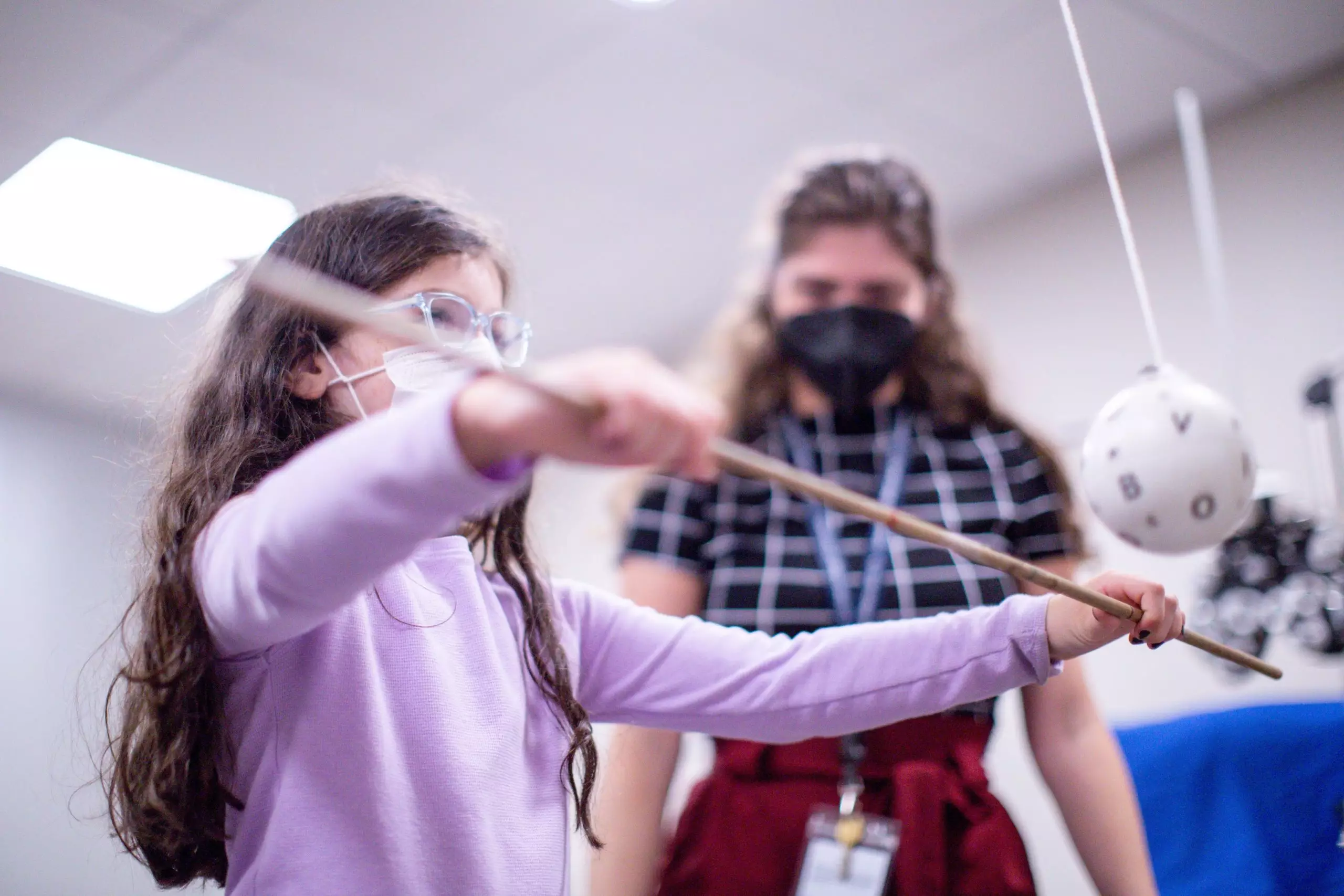What is an eye teaming problem?
It is not enough to have 20/20 vision and be able to see the board or a book clearly. We have two eyes and in order to see properly we have to use our two eyes together in a very precise and coordinated fashion.
Every time we look at something we must accurately aim the two eyes directly at the object of concern. Each eye sends an image to the part of the brain that in involved in the process of seeing. This part of the brain, called the visual cortex, then tries to combine these two images to make one “fused” image. If these images are identical the result is normal, clear, single vision with a perception of depth. If however, the two eyes are not performing in a coordinated manner, the visual cortex will receive two different images and the patient will experience eyestrain and possibly double vision.
Double vision is not something that a child or an adult can easily tolerate. It becomes very difficult to function at school, play, or work if double vision occurs. Eyestrain by itself will make the person dislike or avoid doing near work, such as reading.
What types of eye teaming problems can occur?
Two common types are:
Convergence Insufficiency (CI)
Convergence insufficiency is an eye teaming problem in which the eyes have a strong tendency to drift outward when the individual is reading or doing close work. If the eyes actually drift out, the person experiences double vision or ignores one eye. To control this tendency for the eyes to drift the individual must exert excessive effort to make the eyes turn back in.
Convergence Excess (CE)
Convergence excess is an eye teaming problem in which the eyes have a strong tendency to drift inward when the individual is reading or doing close work. If the eyes actually drift, the person experiences double vision. To control this tendency for the eyes to drift, the individual must exert excessive effort to make the eyes turn back out.
How common are eye teaming problems?
Approximately 10% of children and young adults have eye teaming problems significant enough to cause some of the complaints listed below.
People that have eye teaming problems may complain of the following:

Eyeglasses sometimes can be prescribed to provide relief from the complaints associated with eye teaming problems. For a young child who would have trouble removing and putting on the glasses many times each day, bifocals can be prescribed. A bifocal allows the child to wear the glasses at all times while in school.
Often eyeglasses alone are not sufficient to completely solve eye teaming problems. Although the glasses may provide some relief of the symptoms, if the eye teaming problem persists then another form of treatment must be used. This is referred to as VISION THERAPY.
Vision therapy is a treatment approach that involves weekly office visits. During these visits the patient is given carefully selected and sequenced activities. This treatment restores flexibility and function to the eye teaming system and leads to complete relief of all symptoms. The success of vision therapy has been well documented in scientific literature.
Comprehensive Eye Exam
A comprehensive evaluation of a patient’s level of vision, need for possible glasses correction, and a thorough evaluation of ocular health. Additional testing of eye alignment, depth perception, and color vision are performed.
Visual Motor Skills
A comprehensive evaluation of the patient’s visual motor system’s ability to track and change visual fixation, maintain and accurately change focus, and to maintain the efficient use of two eyes functioning together. Problems in these areas may contribute to inefficient reading and poor attention span.
College of Optometrists in Vision Development
Other Extension Program Foundation
Parents Active for Vision Education
Symptom surveys CISS